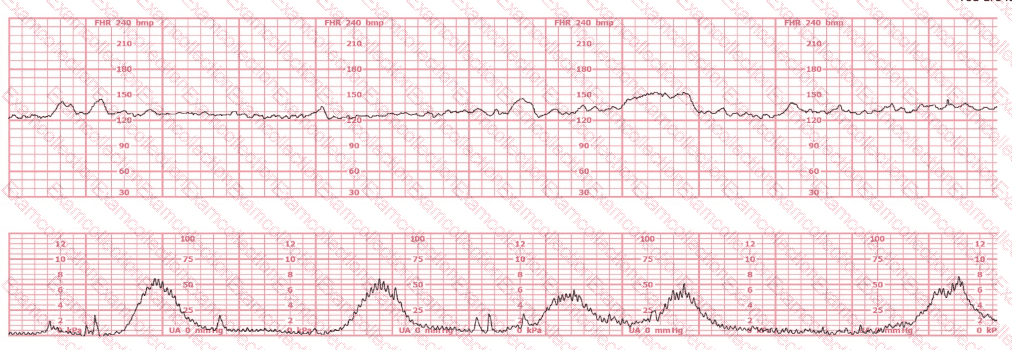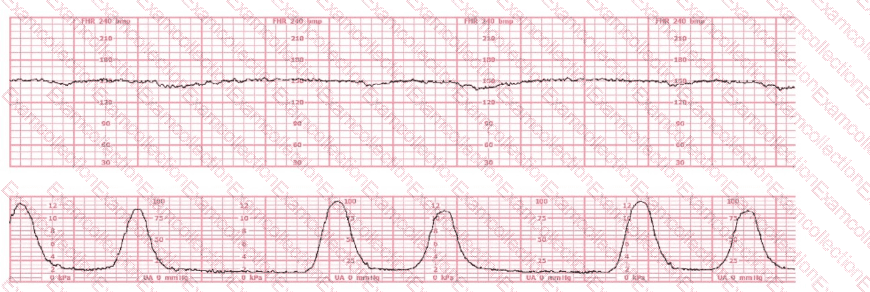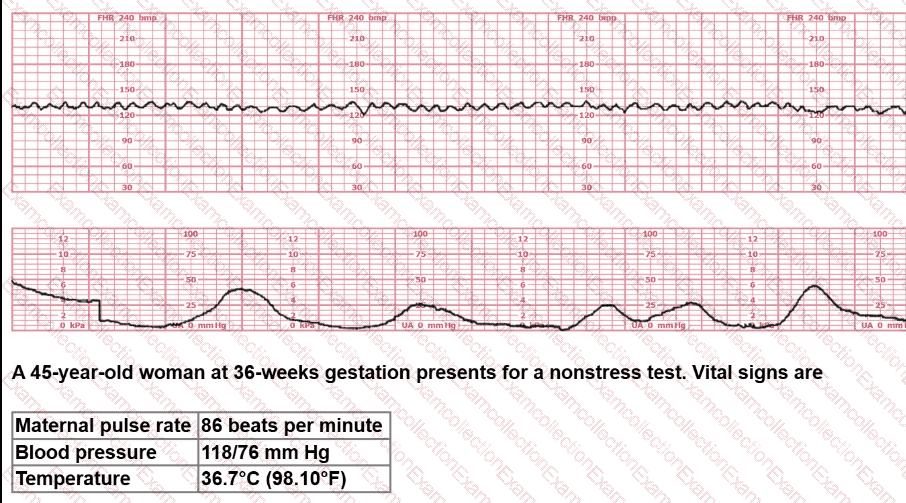NCC EFM - Certified - Electronic Fetal Monitoring
A woman at 38-weeks gestation is admitted to labor and delivery following a fall down the stairs three hours ago. She started feeling contractions in the ambulance. The fetal heart rate tracing shown is on initial evaluation and represents 25 minutes. This tracing is most consistent with a

A woman is admitted to labor and delivery with vaginal bleeding. This tracing is obtained. This is most consistent with:

When documenting the occurrence of late decelerations in the medical record, what should be charted?
This fetal heart rate tracing represents:

The success of interventions to treat fetal hypoxia first depends on:
A woman is being induced with oxytocin. The tracing shown is representative of 20 minutes. Based on this tracing, the next step would be to:

A 45-year-old woman at 36-weeks gestation presents for a nonstress test. Vital signs are:

Maternal pulse rate: 86 beats per minute
Blood pressure: 118/76 mm Hg
Temperature: 36.7°C (98.1°F)
The next course of action would include:
A patient at 41 weeks gestation is being induced. She has progressed slowly and is now at 6 cm, 90% effaced, –1 station. She has the fetal heart tracing shown despite repositioning. The next step in the management of this patient should be to:

A key differentiating factor when determining if a deceleration is early or late is the
The duration of a contraction is best represented by which colored arrow?




